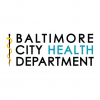Public Health Officials Urge FDA to Issue Warnings for Dangerous Combination of Medications Amid Prescription Drug Overdose Crisis
Monday Feb 22nd, 2016
FOR IMMEDIATE RELEASE
(February 22, 2016)– City and state health directors from across the country today called on the U.S. Food and Drug Administration (FDA) to adopt labels to explicitly warn about a dangerous combination of medications that is helping drive the nation’s prescription drug overdose epidemic.
In a petition submitted to the FDA, the group of health directors, led by Baltimore City Health Commissioner Leana S. Wen, MD, MSc, FAAEM. and Nicole Alexander-Scott, MD, MPH, Director of the Rhode Island Department of Health, called for a “black box warning” on opioids and benzodiazepines that states that concurrent use of the medications increases the risk of fatal overdose. Black box warnings appear on the labels of prescription drugs and call attention to serious or life-threatening risks.
Dr. Wen and Dr. Alexander-Scott were joined in signing the petition by health directors from 16 other states and territories and 12 other cities, along with a collection of nationally renowned academics, researchers, and physicians. A second petition can be signed by the public.
“The science is clear: combining opioids with benzodiazepines is dangerous and is fueling the overdose epidemic,” said Baltimore City Health Commissioner Dr. Leana Wen. “A black box warning will help to educate both patients and clinicians about this potentially lethal drug interaction. By following our recommendations, the FDA can take an important step to reduce the toll of addiction and fatal overdose in communities across the country.”
“Existing warnings about the concurrent use of opioids and benzodiazepines are inconsistent, infrequent, and insufficient. The FDA should act swiftly on the clear scientific evidence and add black box warnings to both classes of medication,” said Dr. Alexander-Scott. “All of us―federal regulators, public health officials, and healthcare providers―have moral and professional obligations to make sure that people stop dying because of these drugs.”
In addition to black box warnings, the petition calls for medication guides for both classes of medication to specifically warn patients about the risks of combined opioid and benzodiazepine use. Patients with chronic pain are often prescribed opioids to treat their pain and benzodiazepines to treat their associated symptoms, such as anxiety and sleep disorders.
In 2012, prescribers wrote 82.5 opioid prescriptions per 100 people and 37.6 benzodiazepine prescriptions per 100 people in the United States. Between 2000 and 2010, treatment admissions for co-occurring addiction to opioids and benzodiazepines increased by 569%. Evidence suggests that these two drugs interact in the brain and place patients at increased risk of respiratory depression and fatal overdose.
Every day in the United States, 44 people die as a result of prescription opioid overdose. In 2013, 22,767 people died of drug overdose deaths that involved prescription drugs. Approximately one in three unintentional overdose deaths from prescription opioids also involve benzodiazepines.
Proposed language for black box warnings
Labeling for all opioid class medications:
WARNING: CONCURRENT USE WITH BENZODIAZEPINES REDUCES THE MARGIN OF SAFETY FOR RESPIRATORY DEPRESSION AND CONTRIBUTES TO THE RISK OF FATAL OVERDOSE, PARTICULARLY IN THE SETTING OF MISUSE.
Labeling for all benzodiazepine class medications:
WARNING: CONCURRENT USE WITH OPIOIDS REDUCES THE MARGIN OF SAFETY FOR RESPIRATORY DEPRESSION AND CONTRIBUTES TO THE RISK OF FATAL OVERDOSE, PARTICULARLY IN THE SETTING OF MISUSE.
City Health Commissioners who signed the petition:
- Baltimore: Leana Wen, M.D. MSc,
- Boston, MA: Monica Valdes Lupi, J.D., M.P.H.
- Chicago, IL: Julie Morita, M.D.,
- Dallas, TX: Zachary Thompson
- Denver, CO: Robert McDonald
- Detroit, MI: Abdul El-Sayed, M.D., DPhil
- Houston, TX: Stephen L. Williams, M.Ed., M.P.A.
- Long Beach, CA: Kelly Colopy
- Minneapolis, MN: Gretchen Musicant
- New York City, NY: Mary T. Bassett, M.D., M.P.H.
- Philadelphia, PA: Caroline C. Johnson, M.D., Acting Medical Director,
- Sacramento, CA: Olivia Kasirye, M.D., M.S.
- San Francisco, CA: Tomás J. Aragón, M.D., DrPH
State and Territorial Health Directors who signed the petition:
- Alaska: Jay C. Butler, MD
- Arizona: Cara Christ, MD, MS
- Arkansas: Nathaniel Smith, MD, MPH
- Connecticut: Raul Pino MD, MPH
- Delaware: Karyl Thomas Rattay MD, MS
- Guam: James W. Gillan, MS, HSA
- Maine: Kenneth Albert R.N., Esq.
- Maryland: Howard M. Haft, M.D.
- Massachusetts: Monica Bharel, MD, MPH
- Minnesota: Edward P. Ehlinger, MD, MSPH
- Montana: Richard H. Opper
- Pennsylvania: Karen M. Murphy, PhD RN
- Rhode Island: Nicole Alexander-Scott, MD, MPH
- South Carolina: Catherine Heigel
- Vermont: Harry Chen, MD
- West Virginia: Rahul Gupta, MD, MPH, FACP
- Commonwealth of the Northern Mariana Islands: Esther Muna, MHA, CPC
Resources online
